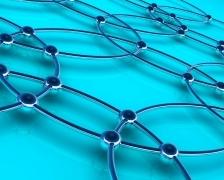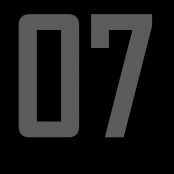[dropcap style=”font-size:100px; color:#992211;”]C[/dropcap]oupled particles cross energy wall.
Which is nice… and might lead to a transporter.
Model demonstrates that it is possible for two particles to cross an energy barrier together, where a single particle could not.
For the first time, a new kind of so-called Klein tunnelling—representing the quantum equivalent of crossing an energy wall— has been presented in a model of two interacting particles. This work by Stefano Longhi and Giuseppe Della Valle from the Institute of Photonics and Nanotechnology in Milan, Italy, is about to be published in EPJ B.
Klein tunnelling is a quantum phenomenon referring to the fact that a high-potential barrier can be transparent to a particle moving at a speed nearing that of light, referred to as relativistic. Most of the previous Klein tunnelling models describe the phenomenon for a single particle. However, when two particles are involved, tunnelling can be modified as a result of their mutual interaction. This means, for example, that two electrons hopping on a lattice, or two ultra-cold atoms trapped in an optical lattice can exchange energy when they occupy the same lattice site.
The authors relied on an analytical and numerical study of a landmark model of interacting particles, called the Hubbard model. It is typically used to describe particle pairs in condensed matter such as in  semi-conductors and in so-called matter wave physics, used for instance to describe microscopic particles oscillating between their material and wave-like characteristics. Longhi and Della Valle predict a new type of Klein tunnelling for a couple of interacting particles confronted by an energy barrier. Even though the barrier is impenetrable for single particles, it becomes transparent when the two particles cross the energy barrier together.
semi-conductors and in so-called matter wave physics, used for instance to describe microscopic particles oscillating between their material and wave-like characteristics. Longhi and Della Valle predict a new type of Klein tunnelling for a couple of interacting particles confronted by an energy barrier. Even though the barrier is impenetrable for single particles, it becomes transparent when the two particles cross the energy barrier together.
They expect these predictions to be confirmed experimentally in ultra-cold atoms trapped in optical lattices. If this is the case, similar quantum simulation could be a tool for emulating multiple-particle systems that cannot be modelled using classical computations.
Source: Springer. Eurekalert. S. Longhi and G. Della Valle (2013), Klein tunneling of two correlated bosons, European Physical Journal B. DOI 10.1140/epjb/e2013-40154-8
Image: Freedigitalphotos.net/Salvatore Vuono
Information on Quantum Tunnelling

Some of the news that we find inspiring, diverting, wrong or so very right.



















